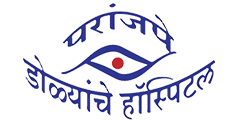Entropion is a condition affecting the eyelid that can cause numerous issues if not addressed. Understanding how it occurs, and potential prevention methods is essential for maintaining good eye health. Here, we’ll explore the basics of entropion and its impact, unravel its causes, recognize symptoms, tackle complications, and discuss prevention and treatment.
Understanding Entropion
Entropion occurs when the eyelid turns inward, causing the eyelashes and skin to rub against the eye surface. This can lead to irritation and damage.
- Entropion’s Impact on Eye Health: The constant friction from the inward-turning eyelid can lead to severe irritation and eye damage, affecting your vision.
- Types of Entropion:
- Involutional Entropion: Often related to aging, as tissues and muscles near the eye weaken over time.
- Cicatricial Entropion: Caused by scarring from injury or infection.
- Spastic Entropion: Results from spasms in the orbicularis oculi muscle, usually due to irritation.
- Congenital Entropion: Present at birth due to anatomical issues in the eyelid structure.
These variations highlight the complexity of entropion and its diverse causes, each requiring careful attention.
Unraveling the Causes of Entropion
Understanding why entropion happens is crucial for preventing it. Several factors contribute to its development:
- Age-Related Degeneration: As we age, the muscles and tendons in our eyelids weaken. This muscle slackening around the eye can lead to entropion.
- Scarring from Injuries or Surgeries: Scars from past injuries or eye surgeries can alter the natural curve of the eyelid, turning it inward.
- Infections Like Trachoma: Certain infections can cause scarring and inflammation, leading to entropion by changing eyelid structure and alignment.
- Congenital Factors: Some people are born with eyelids that naturally turn inward. This genetic predisposition can result in congenital entropion.
Recognizing these entropion causes helps in taking preventive measures, maintaining eye health, and preparing for treatment options when necessary.
Recognizing Symptoms: Early Detection is Key
Spotting entropion symptoms early can prevent severe complications. Here are some signs that might indicate you’re dealing with entropion:
- Redness and Irritation: Constant eye rubbing leads to redness.
- Pain and Light Sensitivity: Your eyes might become sore and overly sensitive to light.
- Excessive Tearing: Your eyes produce more tears to combat irritation.
- Foreign Body Sensation: Feeling as though something is in your eye is common.
Understanding these entropion symptoms early helps in seeking timely medical attention, preventing further issues.
Potential Complications of Untreated Entropion
Ignoring entropion can lead to serious eye issues:
- Corneal Damage and Infections: The eyelid’s inward position causes ongoing friction, leading to corneal damage and infection.
- Potential Vision Loss: Chronic rubbing and irritation can impair vision over time. It is crucial to treat entropion promptly to avoid these consequences.
Diagnosing Entropion: The Role of Professionals
Diagnosis of entropion requires professional attention:
- Visual Examinations: Eye doctors examine your eyelids and eyes to diagnose entropion.
- Additional Tests: Sometimes, further tests determine the extent and cause of entropion.
Consulting a professional ensures accurate diagnosis and effective treatment, preventing undue damage.
Exploring Treatment Options for Entropion
Once diagnosed, exploring entropian treatment options helps in managing the condition effectively.
- Non-surgical Treatments:
- Artificial Tears and Lubricants: Protect the eye from irritation and dryness.
- Botox Injections: Temporarily rotate the eyelid outward, particularly effective for spastic entropion.
- Surgical Procedures: Surgery may be necessary when non-invasive treatments aren’t enough. The surgery involves tightening the eyelid and repositioning muscles and tendons. Recovery generally involves a few weeks of swelling and discomfort but is often successful in correcting entropion.
Proactive Prevention Strategies
Preventing entropion involves several steps:
- Regular Eye Examinations: Regular check-ups help catch early signs and prevent entropion.
- Proper Eye Hygiene: Keeping your eyes clean reduces the risk of infection and irritation.
- Avoid Excessive Rubbing: Resist the urge to rub your eyes too much, as this can exacerbate symptoms.
- Address Underlying Conditions: Treat any infections or eye issues promptly to avoid complications arising.
These strategies not only help in managing existing entropion but can prevent its onset in some cases.
Conclusion: Empowering Proactive Eye Health Decisions
In summary, understanding entropion, its causes, symptoms, and treatments is vital for maintaining eye health. Don’t wait for symptoms to worsen; seek advice if you notice any changes. Making informed decisions can help preserve your vision and prevent complications. Regular check-ups and proactive care make all the difference.
Staying informed and attentive to your eye health ensures a proactive, preventive approach to managing and preventing entropion. Prioritizing timely consultation and entropian treatment is key.

